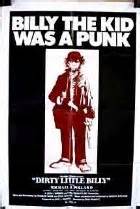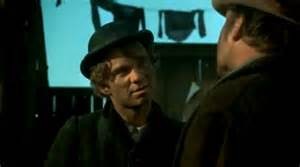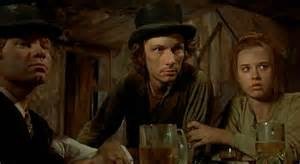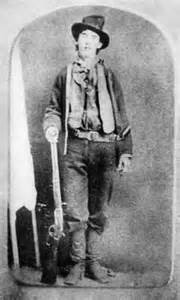Unless you have successfully managed to live completely off the grid for the past year-and-a-half, you’ve probably heard of the critically acclaimed television series Breaking Bad. The series’ final half-season, which aired from August to September of 2013, became an entertainment and social media phenomenon that cemented the show’s status as “highest-rated TV series of all time” according to Guinness World Records. On February 8, Breaking Bad creator and show runner Vince Gilligan will return to Albuquerque with the spinoff Better Call Saul, which expands the backstory of criminal/lawyer Saul Goodman and is said to take place before, during, and after the events of the original series. While I eagerly anticipate once again seeing the familiar sights and characters of the Breaking Bad universe, I can’t help but wonder if Gilligan’s decision to expand on the storyline is a good one. If Better Call Saul is significantly inferior to its predecessor, he risks undermining the reputation of the original series, and even his own as a writer. From an authorial perspective, I think this choice poses an interesting question: how do you know when it’s time to stop adding onto or revising a completed work? And in the end, is there ever really such a thing?
In the case of an immensely popular series like Breaking Bad (or Harry Potter for a book series), writing as much as demand dictates has obvious appeal thanks to the allure of the almighty dollar. Giving the people what they want and letting their willingness to pay for more content determine when to end a popular series should end is a simplistic approach that ultimately takes the decision out of the author’s hands. Better Call Saul has already been given the green light for a second season by television network AMC. The justification for doing so is easily understood: regardless of quality, like the meth-addicted drug users of the original series, many fans are clamoring for more Breaking Bad product and will ensure even a subpar product proves to be enormously profitable.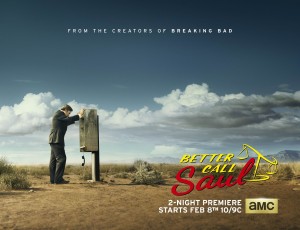
The loyalty fans of popular series have demonstrated in recent memory has led to a trend in Hollywood and television in which many works, especially the film adaptations of book series, favor quantity over quality. The Harry Potter film series started a trend when the adaptation of the final book of the series, Harry Potter and the Deathly Hallows, was split into two parts. The adaptations of Twilight, The Hunger Games, and even Tolkien’s The Hobbit have taken a similar approach in stretching a single novel into two or more movies. Hobbit director Peter Jackson also directed the Lord of the Rings movie trilogy, which was both critically and financially successful. His decision to split the prequel novel The Hobbit, a book that has fewer pages than any single novel in the Lord of the Rings trilogy, into three separate movies has largely been met with criticism and deemed unnecessary. While some may interpret his choice as a cheap cash grab, it also stands to reason that Jackson may have simply tried to apply a previously successful formula in hopes of achieving the same results.
The choice both Vince Gilligan and Peter Jackson made to expand upon their original work is one many authors are tempted to make. While I’m sure everyone would love to face the same dilemma of potentially sacrificing the integrity of a story in exchange for millions of dollars, the rest of writers will have to settle for simply knowing when it’s time a story should end for its own good. Most of the time this is simply a matter of letting plot or narrative dictate a natural conclusion. On the other hand, there is an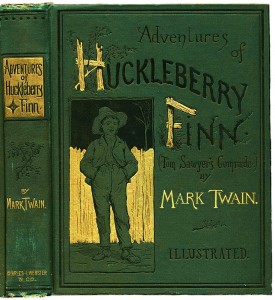 authorial justification for continuing a story even after its initial ending point. The inclination as a writer is to write whatever stories are worth telling, and if a completed work generates another story to be told, then let it be heard. What if Homer had decided that after the Iliad had been completed that there was no need to continue Odysseus’ exploits in the Odyssey? Or if one of America’s seminal works of literature had been omitted because Twain stopped writing about Huckleberry Finn after his appearance in The Adventures of Tom Sawyer?
authorial justification for continuing a story even after its initial ending point. The inclination as a writer is to write whatever stories are worth telling, and if a completed work generates another story to be told, then let it be heard. What if Homer had decided that after the Iliad had been completed that there was no need to continue Odysseus’ exploits in the Odyssey? Or if one of America’s seminal works of literature had been omitted because Twain stopped writing about Huckleberry Finn after his appearance in The Adventures of Tom Sawyer?
It can be difficult to put down the pen to finally declare a personally meaningful work or the story of a beloved character “complete.” Whitman made the revising and editing process for Leaves of Grass a lifelong pursuit while J.D. Salinger spent so much time writing about the Glass family that one would be inclined to believe they were real people. Being able to identify whether or not a piece of writing has reached its full potential can be challenging, and having the discipline to leave an outstanding story in the rearview mirror can be an even more difficult task. With cases like Better Call Saul, the impulse as both a writer and the creator of a series with passionate fans clamoring for more material is to give the people what they want and continue a previously successful story. Time will tell how viewers will receive the spinoff series, but in the end maybe there’s something to be said for always leaving ‘em wanting more.

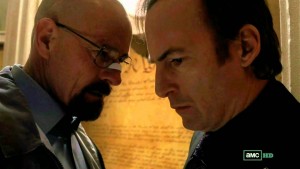
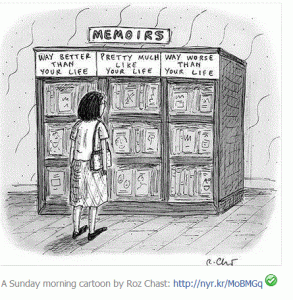 At one time memoir was considered a genre left for literary individuals or cultural figures who had lived life to the fullest or undergone some process of self-discovery that made their stories worthy of a public audience. But in recent years, this type of memoir has become overlooked and has been replaced, like a lot of great literature is, by works of nonfiction written by celebrities whose rise to stardom is deemed worthy of a book (i.e. whichever B-list celebrity publishers decide will make them the most money by writing about their drug problems, or embarrassing sexual endeavors) and memoirs that have on-screen potential.
At one time memoir was considered a genre left for literary individuals or cultural figures who had lived life to the fullest or undergone some process of self-discovery that made their stories worthy of a public audience. But in recent years, this type of memoir has become overlooked and has been replaced, like a lot of great literature is, by works of nonfiction written by celebrities whose rise to stardom is deemed worthy of a book (i.e. whichever B-list celebrity publishers decide will make them the most money by writing about their drug problems, or embarrassing sexual endeavors) and memoirs that have on-screen potential.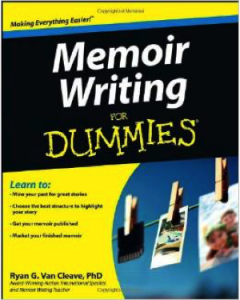 puter and the ability to form a sentence (although not always a grammatically correct one) thinks they can and should write a memoir; there is even a Memoir Writing for Dummies manual available for those just starting out. This both upsets me and excites me as a writer and reader of nonfiction. On the downside I see how this growing genre is becoming overly commercialized, but I also see how the influx of people writing memoir and creative nonfiction could potentially result in new icons of the genre.
puter and the ability to form a sentence (although not always a grammatically correct one) thinks they can and should write a memoir; there is even a Memoir Writing for Dummies manual available for those just starting out. This both upsets me and excites me as a writer and reader of nonfiction. On the downside I see how this growing genre is becoming overly commercialized, but I also see how the influx of people writing memoir and creative nonfiction could potentially result in new icons of the genre.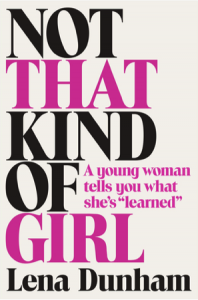 e for decades now, with nonfiction publishers clinging to the notion that the general public will want to know how stars and the elite made their fames and fortunes (or lost them both). In 2014 alone, Amy Poehler, Oprah Winfrey, Neil Patrick Harris, Lena Dunham, Alan Cumming, Rob Lowe, Danielle Fishel, Mario Lopez, and Joan Rivers all came out with memoirs. Other memoirs of the past decade include the highly successful Bossypants by Tina Fey and Mindy Kaling’s book, Is Everyone Hanging Out Without Me? (And Other Concerns). I have read many of these titles, and though I often found them comical and, occasionally, well written, they seem to blend into one indistinguishable memoir after time, with only a few strange or innovative pieces among them. Lena Dunham’s
e for decades now, with nonfiction publishers clinging to the notion that the general public will want to know how stars and the elite made their fames and fortunes (or lost them both). In 2014 alone, Amy Poehler, Oprah Winfrey, Neil Patrick Harris, Lena Dunham, Alan Cumming, Rob Lowe, Danielle Fishel, Mario Lopez, and Joan Rivers all came out with memoirs. Other memoirs of the past decade include the highly successful Bossypants by Tina Fey and Mindy Kaling’s book, Is Everyone Hanging Out Without Me? (And Other Concerns). I have read many of these titles, and though I often found them comical and, occasionally, well written, they seem to blend into one indistinguishable memoir after time, with only a few strange or innovative pieces among them. Lena Dunham’s 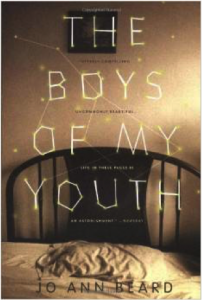 nd good for a thoughtless read on the beach, these types of memoirs do not give an accurate depiction of the genre as a whole. Memoirs like reality star Nicole “Snooki” Polizzi’s 2011 memoir Confessions of a Guidette is not a piece of literature that young nonfiction writers should aspire to emulate. Instead of emphasizing celebrities, drama, and historic figures, we need to consider emphasizing emerging memoirists who make the ordinary extraordinary or who are able to write with such candor and control that readers can tell they are reading the works of literary masters. I want to see memoirs like Mary Karr’s
nd good for a thoughtless read on the beach, these types of memoirs do not give an accurate depiction of the genre as a whole. Memoirs like reality star Nicole “Snooki” Polizzi’s 2011 memoir Confessions of a Guidette is not a piece of literature that young nonfiction writers should aspire to emulate. Instead of emphasizing celebrities, drama, and historic figures, we need to consider emphasizing emerging memoirists who make the ordinary extraordinary or who are able to write with such candor and control that readers can tell they are reading the works of literary masters. I want to see memoirs like Mary Karr’s 